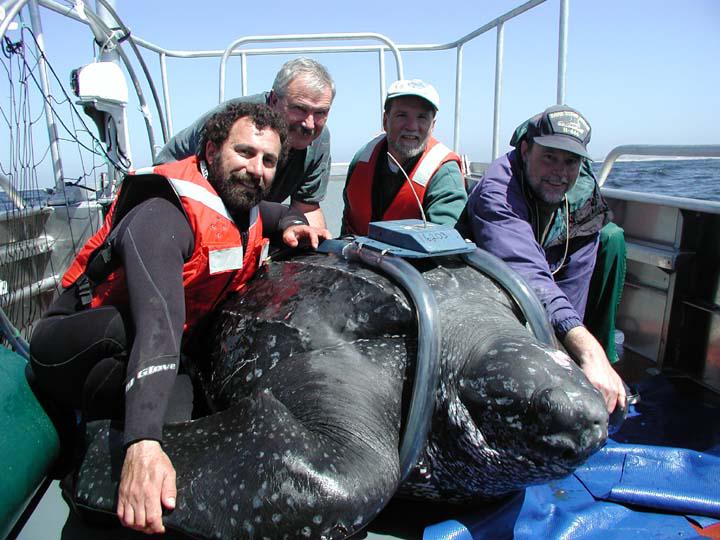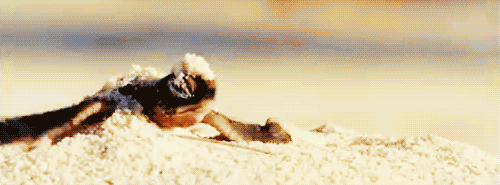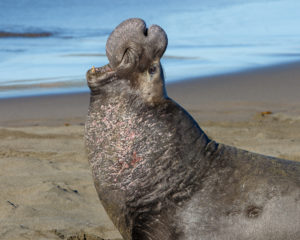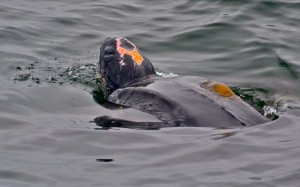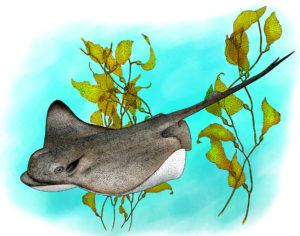On an isolated beach in Bird’s Head Peninsula, Indonesia, a female leatherback turtle shuffles out of the ocean and onto the shore, ready to lay her eggs. Under the cover of night she excavates a hole in the sand, depositing around 80 eggs inside. With a flicking movement, she uses her flippers to cover the nest with sand to protect the eggs from potential predators. Then, shuffling away, she returns to the turquoise waters to make an 8,500-mile journey across the Pacific Ocean to the California coast.
That incredible migration is now at its peak, as leatherbacks arrive to feed on brown sea nettle jellyfish, and Oct. 15 is California’s inaugural Pacific Leatherback Conservation Day. Last year the critically endangered turtle became the state’s official marine reptile.
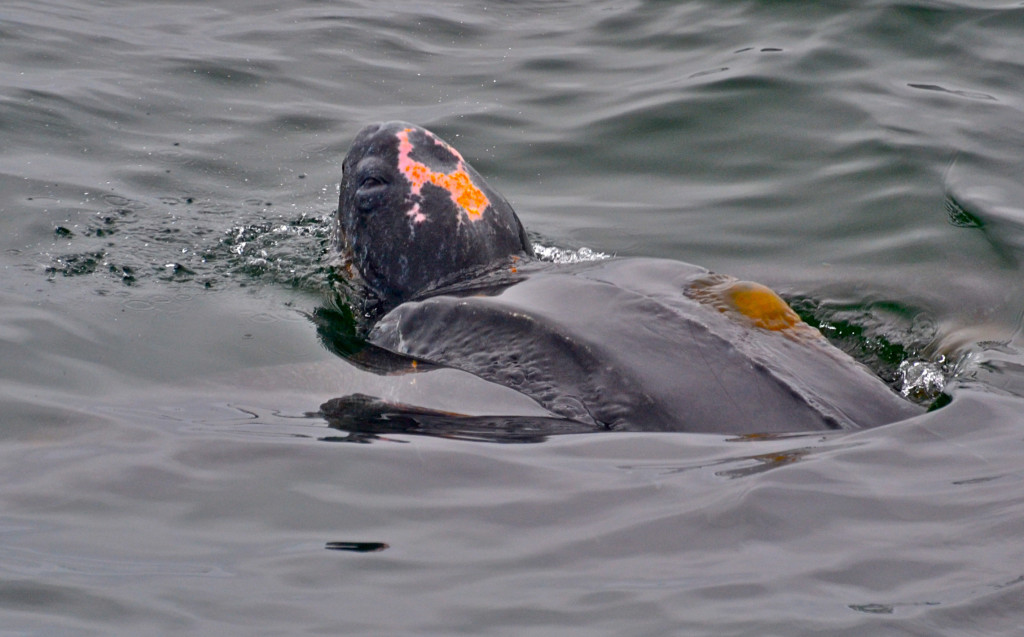
But even at the height of their presence here, the turtles remain largely elusive both to the public and to science. It has only been during the past 10 years that researchers have really begun to learn more about these rare animals, said Teri Shore, program director at the Turtle Island Restoration Network.
“We didn’t know where these turtles came from and we didn’t know what their status was,” she said. “So this is not only new for Californians, but it’s also new to science.”
Leatherbacks are the only remaining species of the Dermochelys genus, which traces its evolutionary roots back more than 100 million years. While most sea turtles are known for their hard, bony shells, the mottled ink-blue carapace of the leatherback is flexible and leathery with ridges that result in greater hydrodynamic structure. One of the reasons for their obscurity is that leatherbacks can dive to depths of 4,200 feet — deeper than any other turtle — and they never venture onto California’s beaches.
“I think the reason people don’t know a lot about them is because they’re out of sight, out of mind,” Shore said. “They live in an ocean environment and only stick their head out to take a breath, so they spend most of their time underwater diving and eating.”
Another reason for their obscurity is their critically endangered status. Scientists estimate that there are only 2,000-5,700 nesting female leatherback turtles left in the world. Ricardo Tapilatu, a researcher who studies leatherbacks at their nesting site in Indonesia, said leatherback turtle populations have declined more than 78 percent since 1981.
“We have identified reductions caused by invasive species such as feral pigs and dogs who live in the villages surrounding the beach,” Tapilatu said. “They wander onto the beach, dig up the nest and eat the eggs because they’re looking for an opportunistic hunt.”
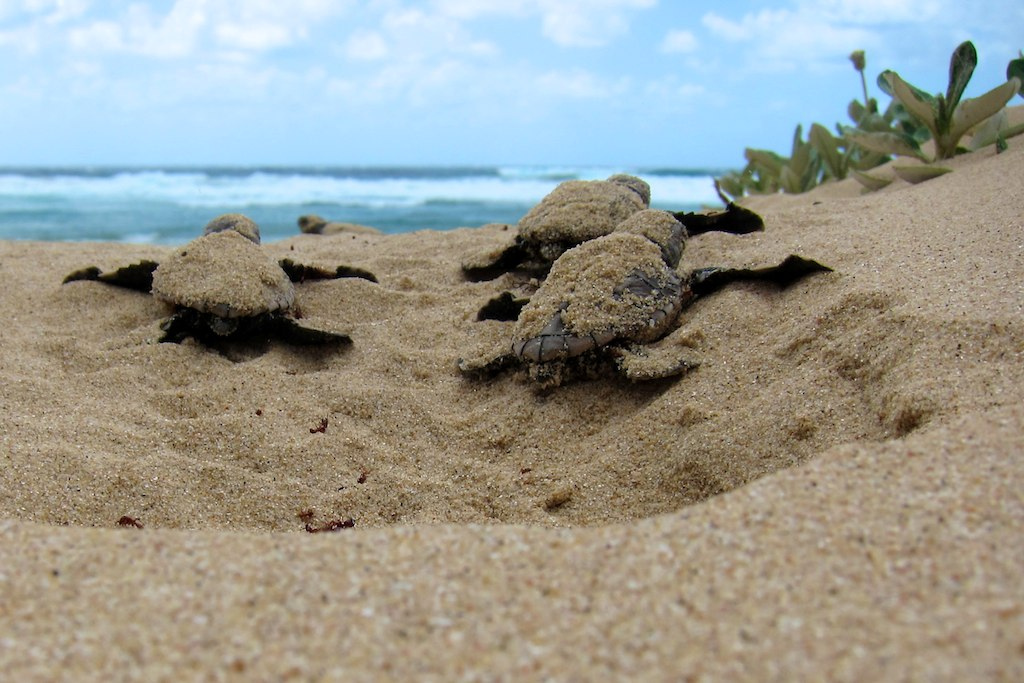
Rising sea level and alterations in ocean current circulation also threaten the turtles by increasing erosion and changing beach topography, resulting in damaged nests and affecting hatching success. Global warming is also changing the temperature of leatherback nests, which need to be around 85 degrees Fahrenheit to produce a mix of male and female hatchlings. Warmer temperatures mean more female hatchlings, while temperatures that are too hot can result in failure to hatch.
“We have been monitoring beach temperatures since 2005 and we found that the nest temperatures are exceeding the tolerable temperature for leatherback egg development, resulting in biased sex ratios and low hatching success,” Tapilatu said.
Shore said that closer to California, commercial fisheries are the primary threat to adult leatherback turtles. Because leatherbacks travel such long distances across the ocean they are at risk of being accidentally hooked by longline fishing boats.
“Along our coast we have protections in place that have significantly reduced their capture in the swordfish fishery,” she said. “But the longliners in the Pacific and in Hawaii are still taking their toll.”
Earlier this year the National Oceanographic and Atmospheric Administration (NOAA) designated nearly 42,000 square miles of ocean along the West Coast as critical habitat for Pacific leatherback turtles, from Point Arena in Mendocino County to Point Arguello in Santa Barbara County. During the leatherback migration both longline and gill-net fishing—also a threat to turtles—are banned along the West Coast.
“Although the state of California has a really good record of protecting these turtles from the fisheries with critical habitat, the turtles are still declining,” Shore said. “Even though in Indonesia they are protecting their nesting beaches and the waters off the beach, the turtles are still declining. So what more could we or should we, on either side of the ocean, be doing to protect them?”
For ideas on how to celebrate Pacific Leatherback Conservation day visit the Sea Turtle Restoration Project and take the leatherback turtle pledge.

